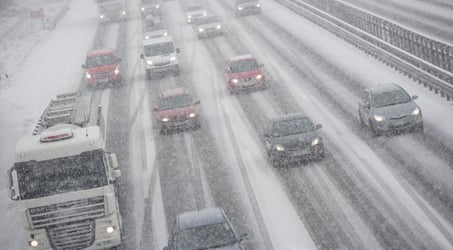Only one runway is currently open and plane engines are having to be de-iced, causing further delays.
Workers are busy clearing snow from the runways, but anyone planning to fly from the airport today has been told to contact the airport to check the status of their flight.
The weather has also been causing chaos on the roads, especially in the east of Austria. On Sunday, a sudden snow storm in Upper Austria surprised drivers on the A1 motorway and resulted in a massive pileup involving over 60 vehicles, with several people injured.
There were also delays on Vienna's public transport on Monday morning. Some roads in the capital – especially the Gürtel – have been gridlocked. 1,300 workers have been employed to clear snow from the roads.
In alpine regions the avalanche risk has been increased, especially in Tyrol. Despite the snowfall many ski lifts have been shut for the day in Carinthia.




 Please whitelist us to continue reading.
Please whitelist us to continue reading.
Member comments